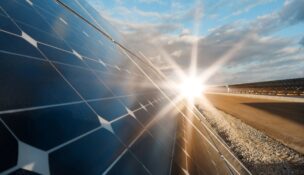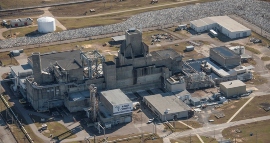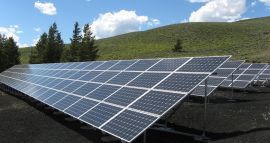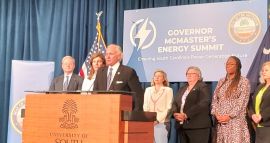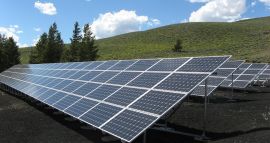How this Charleston energy plant is powering homes on Long Island
Christina Lee Knauss //April 10, 2023//
How this Charleston energy plant is powering homes on Long Island
Christina Lee Knauss //April 10, 2023//
Electric vehicles and the batteries needed to power them have made most of the manufacturing headlines in South Carolina recently, but other segments of the clean energy revolution are making the news and history here as well.
One Charleston company has taken a groundbreaking role in a more climate friendly way of getting electricity to homes — wind energy.
The U.S. government in 2022 set a lofty target of producing 30 gigawatts of operating offshore wind capacity by 2030, but that goal is in jeopardy according to recent reports because current wind farm projects in the works risk delays because of limited domestic manufacturing and supply chain problems slowing down shipments of components from overseas.
Through its subsea-cable production facility in Goose Creek near Charleston, global cable company Nexans is determined to help solve that problem.
Headquartered in Paris, Nexans has 28,000 employees worldwide and a manufacturing presence in 42 countries, including seven locations in the United States.
The Charleston plant, which employs 150 people, recently became the first cable production plant on U.S. soil to produce undersea cable to be used at a wind farm based here. It also is currently the only facility in the country capable of manufacturing high voltage subsea cables.
In February, special heavy-duty undersea cables made in Charleston were shipped to New York for use at the South Fork Wind Farm, a 132-megawatt, 12-turbine offshore wind farm located 35 miles offshore of Montauk Point, N.Y., that, once complete will eventually produce enough electricity to power 70,000 homes in the town of East Hampton on Long Island.
South Fork is the result of a partnership between Danish company Orsted, a global leader in offshore wind development, and Boston-based power company Eversource. Construction on South Fork started in early 2022 and the project is expected to be online by the end of 2023.
Charleston plant is at the forefront of wind energy movement
The cable made in Charleston will be used to connect the offshore wind farm to the onshore grid. The final load of cable is headed for New York in March.
“This is a great milestone for us,” said Brian Boan, director of Nexans’ Charleston plant. “It enables us to become leaders of this industry here at a time when our competitors don’t have a footprint over here yet.”
For Boan, the first shipment of cable to the Long Island project was the culmination of months of hard work — and years of planning that enabled the Charleston plant to be at the forefront of the wind energy movement in the United States.
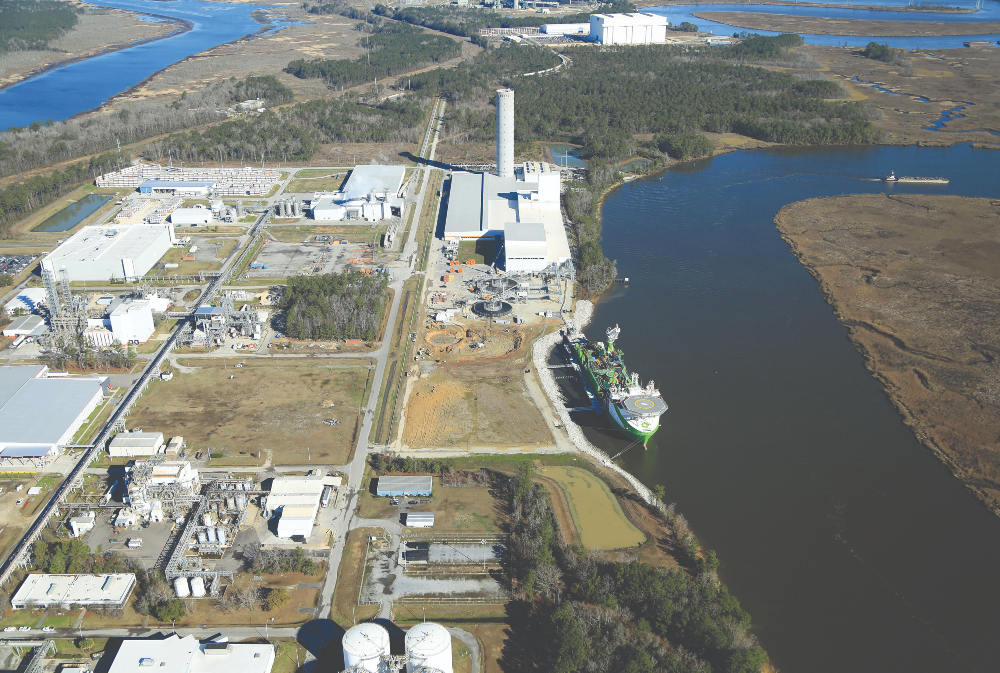
Boan, who has a background in engineering, has been with Nexans in Charleston since its beginning in 2011 when the site along the Cooper River was “nothing but dirt and trees,” he said. The plant, which went into operation in 2013, originally build high voltage cable for use on land. In 2017, company leaders looked at the future of wind energy and decided to transform the Charleston facility to produce high voltage subsea cables.
Their reasoning? Location, location, location.
“It was a strategic decision because of our location on the banks of the Cooper River,” Boan said. “It was strategic to enable cable-laying vessels to pull right up next to the plant and load out the cable, then have direct access to head out to these global projects offshore.”
Nexans also has the advantage of having one of the world’s most advanced fleets of cable-laying vessels, according to information on the company’s website. The boats include the newly commissioned Nexans Aurora and the Skagerrak, currently in service, which are both designed for complex cable-installation operations at all depths.
Not your run-of-the-mill electric wire
Boan said Nexans initially invested about $250 million into expansion of the Charleston facility to enable it for subsea cable production along with the existing land cable operations. An additional $65 million expansion is planned for the Charleston facility in the future.
The cable made in Charleston isn’t your run-of-the-mill electric wire, Boan said. These cables have to be capable of transmitting large amounts of power over long distances under some of the most grueling conditions imaginable.
“These cables have to be able to withstand the high pressures of the ocean floor and very cold temperatures,” he said. “They also have to withstand not just physical damage from anchors or fishing trawlers, but just shear saltwater degradation. The products we put in these cables have to be very, very specific and meet high tech specifications to withstand that type of environment.”
Nexans in Charleston produces subsea cable both for the relatively shallow depths planned for the U.S. market and much deeper projects in other locations around the world.
“These are what we call high voltage or extra high voltage cables, carrying anywhere from 69,000 volts all the way up to 525,000 volts,” Boan said. “We’re talking about the transition of very large amounts of power from that generating source offshore. We harness that power and bring it all back to shore.”
Cables for projects like South Fork start with raw copper rods sourced from a facility in Canada and also include aluminum conductors and other raw materials. Each cable is built from scratch at the Charleston facilities using specialized, state-of-the-art machinery.
Production of wind-energy components a rising industry
Bringing energy from miles offshore naturally demands an awful lot of cable. The South Fork project, for instance, demanded Charleston’s workers to produce 65 miles of cable.
The intricacy of the work involved plus the magnitude of materials required means that completing work for a wind farm client isn’t something that can be done in a few weeks.
“Depending on the size of the cable, it takes six months to a year just to make the cable for one project,” Boan said. “One reason is the long length of the cable involved, and the other is the meticulous technical process to make sure the product is high quality and can last in a rough environment.”
Production of components for wind energy — and the supplies for that production — are both up-and-coming industries in the United States, so Nexans in Charleston has had to rely on suppliers from overseas for much of its material and equipment. Boan said the pandemic and events like the war in Ukraine have caused some delays, but overall good planning on the part of Nexans’ leadership has enabled the Charleston plant to meet most of its production deadlines.
Another challenge exists in training workers for an industry that is still in its fledgling stages in the United States. Boan said employees in Charleston have benefited from extensive internal training by workers from Nexans’ European cable plants. The number of workers needed at the Charleston plant will also likely grow in the future as the demand for its cable products increases.
South Fork Wind is not the only large project Nexans is tackling right now. The plant recently started some production work for 100 miles worth of cable for a much bigger project for the Northeast region — the 700-megawatt Revolution Wind project that eventually will power up to 450,000 homes in Connecticut and Rhode Island. Boan said the company’s work for Revolution will take about 10 months to complete, with delivery expected in 2024.
“We take a lot of pride here that we’re not only a big part of the green initiative here in the U.S., but that we’re a leader in this industry in North America,” Boan said.
r






